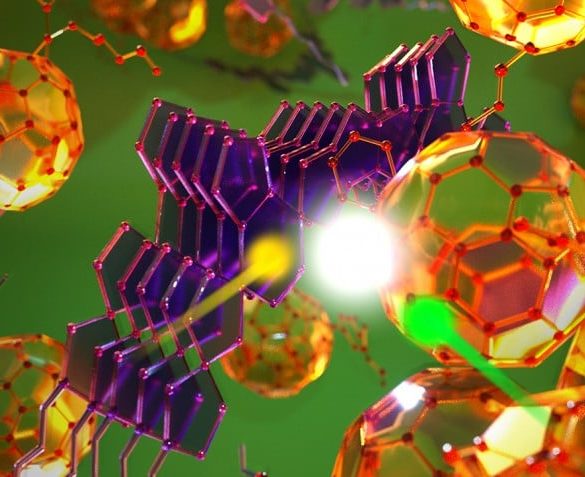RESEARCH
organic solar cells



The molecules used in organic solar cells are solution-processable at high throughput and are cheap, resulting in low production costs to fabricate a large volume. Combined with the flexibility of organic molecules, organic solar cells are potentially cost-effective for photovoltaic applications. Molecular engineering can change the band gap, allowing for electronic tunability. The optical absorption coefficient of organic molecules is high, so a large amount of light can be absorbed with a small amount of materials, usually on the order of hundreds of nanometers. The main disadvantages associated with organic photovoltaic cells are low efficiency, low stability and low strength compared to inorganic photovoltaic cells such as silicon solar cells. Compared to silicon-based devices, polymer solar cells are lightweight (which is essential for small autonomous sensors), potentially disposable and inexpensive to fabricate, flexible, customizable on the molecular level and potentially have less adverse environmental impact. Polymer solar cells also have the potential to exhibit transparency, suggesting applications in windows, walls, flexible electronics, etc.
In the field of organic solar cells, our group has succeeded in achieving an efficiency of 9.3% and 14.9% in solution processed bulk heterojunction organic solar cells based on fullerene and non-fullerene acceptors respectively and for a device area of 0.09 cm2. Devices of different areas are fabricated to understand how the change in device area affects the photovoltaic parameters in single junction and ternary solar cells. For 1 cm x 1 cm devices, an efficiency of ~ 4.7% is achieved in a non-fullerene acceptor-based system, ~ 3.4 % in fullerene-based single junction and 3.18% in fullerene-based ternary solar cells. Our group has worked on understanding the processes like charge carrier recombination and transport that affect the open circuit voltage and fill factor of organic solar cells, utilizing steady-state, impedance and transient spectroscopic techniques. Impedance and transient spectroscopic measurements are carried out to understand the parameters affecting the open circuit voltage and fill factor in organic solar cells by considering squaraine: PCBM and PTB7: PCBM solar cells as model systems. The group has also experimented on improving the open circuit voltage and fill factor values of organic solar cells by introducing the concept of ternary solar cells. Ternary organic solar cells containing PTB7, squaraine and PCBM are fabricated to achieve an improvement in the open circuit voltage and fill factor of the system compared to the single junction solar cells. We have also analysed the effects of shape, material and location of incorporation of metal nanoparticles on the performance of plasmonic organic solar cells. In collaboration with NIT, Trichy, our group has tested the efficacy of transparent conducting Cu–Zn–S thin film as a hole transport layer in organic solar cells. Besides improving the efficiency of organic solar cells, we have resorted to improving the stability of organic solar cells by employing a ternary concept and obtained stability of 200 hours for a ternary solar cell by retaining 91% of the initial power conversion efficiency.
